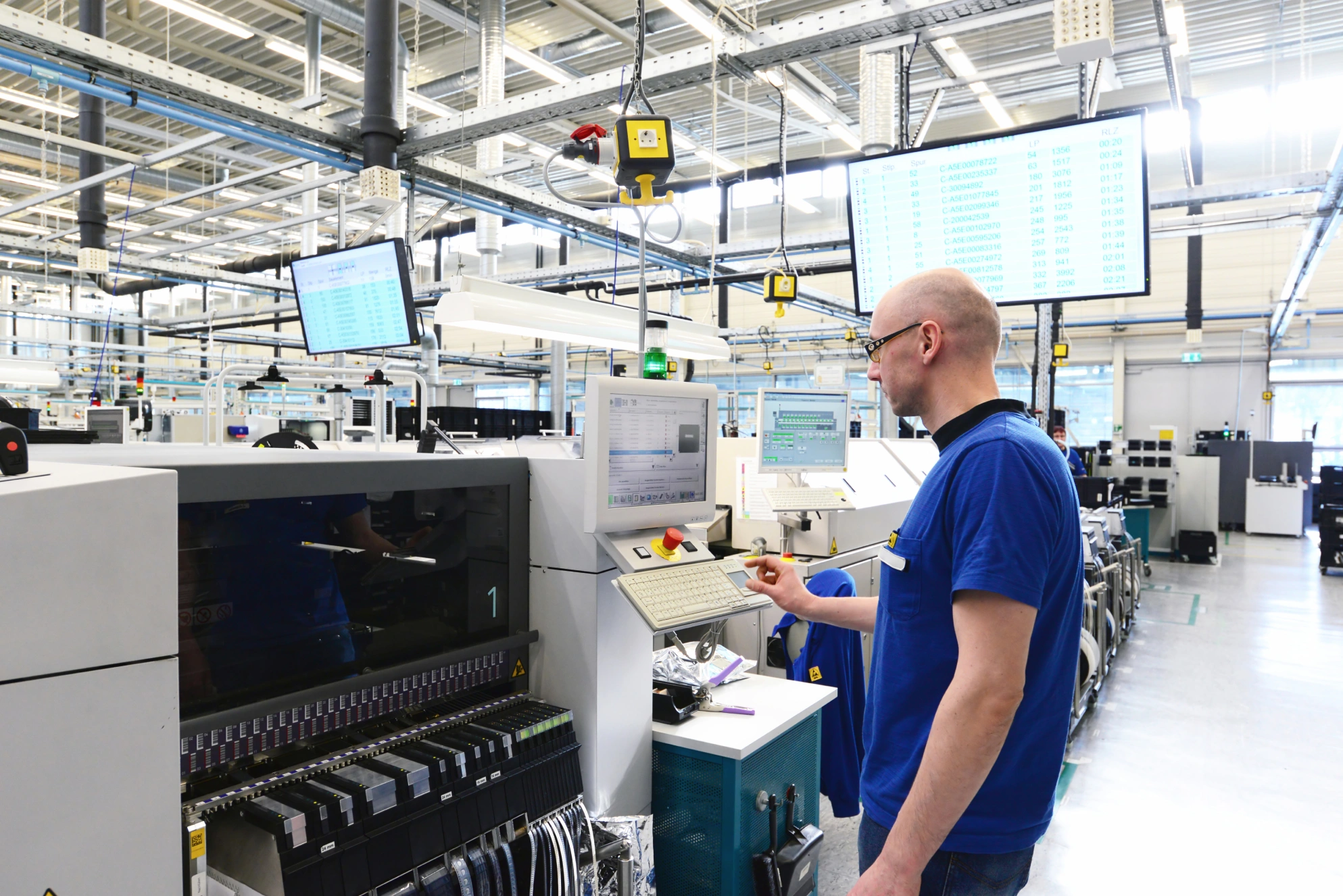Just-in-time manufacturing is a manufacturing philosophy that sounds deceptively simple: produce only what’s needed, exactly when it’s needed. But how well you execute can make or break profitability.
Even the best just-in-time (JIT) programs can’t escape this simple reality: no amount of scheduling precision can overcome equipment that isn’t reliable.
This makes predictive maintenance (PdM) essential for JIT manufacturing. The benefits of implementing predictive maintenance techniques go well beyond reducing downtime. You'll achieve a degree of equipment reliability that makes just-in-time manufacturing possible in the first place.
What Is Just-in-Time Manufacturing?
At its core, just-in-time manufacturing (JIT) is a production strategy focused on eliminating waste. Rather than maintaining large inventories of raw materials or finished goods, JIT manufacturing is all about producing the right part, in the right amount, at the right time.
It’s a lean philosophy that took off in the automotive industry (popularized by Toyota), and it has since shaped how manufacturers around the world think about efficiency. The goal is to minimize everything that doesn’t directly add value, from excess materials to unnecessary motion and waiting time.
For manufacturers, JIT production yields lower inventory costs, improved cash flow, faster production cycles, and better responsiveness to customer demand. There's only one catch: JIT manufacturing depends entirely on uptime. When production schedules are tight, even a single unexpected equipment failure can ripple across supply chains, leading to missed deadlines, costly overtime, and frustrated customers.
JIT Manufacturing’s Biggest Challenge: Unplanned Downtime
In a JIT manufacturing operation, the margin for error is razor-thin. You don’t have the luxury of overstocked inventory to buffer against downtime. Every component, machine, and process must work exactly as expected, every time.
Unplanned downtime is the enemy of just-in-time systems. It disrupts production flow, drives up operating costs, and throws delivery schedules off balance. Even short stoppages can trigger a domino effect across suppliers, logistics teams, and customers.
Because it's the only maintenance strategy that makes zero downtime achievable, predictive maintenance (PdM) is mission critical in a JIT environment. Predictive maintenance technology and ongoing expert guidance can help you transform your maintenance process and keep your machinery in peak health.
Predictive Maintenance (PdM): The Backbone of Reliability
Predictive maintenance (PdM) is a data-driven maintenance strategy that uses real-time equipment data to identify early signs of wear or failure before they become production-stopping issues. Unlike preventive maintenance, which relies on calendar-based schedules, PdM maintenance focuses on equipment condition and performance trends.
The predictive maintenance process is simple.
- Asset health data is captured by condition monitoring techniques such as vibration analysis and oil analysis and streams into a predictive maintenance platform.
- AI and machine learning models execute asset anomaly and fault detection with increasing precision, identifying emerging issues and troubling patterns early in the failure curve.
- Condition monitoring engineers (CMEs) validate the data and reach out to maintenance teams with timely prescriptive insights.
- Maintenance teams make smarter, faster decisions about when to perform maintenance tasks.
This shift from reactive and routine maintenance to a predictive, proactive model eliminates unnecessary maintenance costs and makes it easy to prevent unplanned downtime. A successful predictive maintenance program works seamlessly with existing systems, empowering lean teams to perform timely maintenance, simplify future maintenance scheduling, and enhance the performance and reliability of mechanical equipment.
Shortly after a simple two-day install of their new predictive maintenance system, lumber producer Arbec saw their culture and operations begin to shift. The team realized significant value by week four and prevented 15 failures in the first six months, achieving 12X ROI. Read their story here.
4 Reasons Predictive Maintenance Is Paramount for JIT Success
When predictive maintenance is done right, it gives you real-time visibility into equipment health, allowing you to anticipate problems before they disrupt production. It also gives you answers beyond the alerts, with a dedicated CAT III+ analyst serving as an extension of your team.
Here’s how PdM strengthens a just-in-time system:
1. Early detection eliminates unplanned downtime
PdM relies on continuous condition monitoring, using vibration, temperature, and oil analysis data. When those parameters drift from normal operation, AI-powered predictive maintenance tools such as asset anomaly and fault detection flag early signs of wear or misalignment. Teams can schedule maintenance tasks before failure occurs, without guessing or over-scheduling.
2. Data-Driven Maintenance Decisions Reduce Waste
Predictive analytics gives maintenance personnel a clear picture of equipment performance. Instead of replacing parts on a schedule, they act only when data supports it.
This eliminates unnecessary maintenance, reduces spare parts consumption, and minimizes overtime, delivering measurable cost savings. It’s a perfect alignment with the lean principles that define jit manufacturing.
3. Optimized Maintenance Schedules Keep Production Flowing
Implementing predictive maintenance allows you to optimize maintenance scheduling around production demands. Maintenance work can be planned during off-peak hours or micro-pauses between production runs instead of shutting down the line at arbitrary intervals. This level of flexibility helps sustain JIT’s rhythm without compromising on asset reliability or safety.
4. Real-Time Visibility Builds Supply Chain Resilience
Just-in-time manufacturing requires precision coordination between suppliers, production teams, and logistics. Predictive maintenance offers real-time equipment data that helps leadership make faster, more confident decisions about capacity, maintenance planning, and throughput.
When everyone from operations to procurement trusts the health of critical components, the entire system becomes more resilient—even in the face of supply chain variability.
The Benefits of Predictive Maintenance for JIT Operations
The benefits of PdM touch every metric that matters in a JIT environment.
- Steady, reliable production: Reduce unplanned downtime to keep production lines running continuously and predictably.
- Reduced maintenance costs: Eliminate unnecessary maintenance and costly repairs.
- Better equipment performance: Reduce degradation and wear to maximize the lifespan and reliability of mechanical systems.
- Smarter maintenance strategy: Transition from reactive maintenance to data-driven, proactive management, with streamlined processes and more effective interventions.
- Enhanced operational efficiency: Align maintenance efforts with production goals and scheduling.
These benefits add up to a more efficient, profitable, and predictable operation. This is the core promise of just-in-time manufacturing.
Our recent white paper Succeeding with Predictive Maintenance: How to Justify Technology Investments and Maximize ROI breaks down the real-world cost savings, performance gains, and strategies top manufacturers use to secure executive buy-in. Download it now to learn how you can turn PdM into a proven ROI driver.
Predictive Maintenance in Action: High-Value Saves Made Easy
Let’s look at two predictive maintenance examples of high-value asset saves that directly support JIT success:
Vibration Analysis
Vibration analysis reveals imbalance, misalignment, bearing wear, and other issues that can cause catastrophic machine failure.
- At a metals facility, vibration readings on a motor’s drive end (DE) suggested coupling or bearing clearance issues. Upon disassembly, the coupling’s teeth were found completely worn down.
- Based on timely recommendations from the team's condition monitoring engineer (CME) partner, the coupling was replaced and vibration levels dropped significantly.
- This quick action prevented six hours of unplanned downtime, saving $439,200. 💡Read the full story here.
Oil Analysis
Oil analysis detects contamination, viscosity changes, and wear particles early, allowing maintenance personnel to take corrective action early in the failure curve.
- The lubricant in a plastics facility extruder gearbox showed signs of extreme wear. Iron particle counts surged, viscosity had dropped, and water content had tripled.
- The team's CME partner advised them to hot‐flush the system or change to the correct lubricant and add filtration (7 µm, β 1,000).
- This simple intervention prevented 336 hours of downtime and saved $897,600. 💡Read the full story here.
These techniques, especially when used in combination, contribute to a more reliable production environment—helping sustain the precision timing JIT manufacturing requires.
Implementing Predictive Maintenance: Where to Start
If you’re ready to align your maintenance program with your just-in-time manufacturing strategy, you need a focused predictive maintenance plan to avoid the usual predictive maintenance challenges. Start small but strategic:
- Perform a criticality assessment to determine which assets, if they fail, would disrupt production flow and/or incur the biggest costs to repair.
- Deploy condition monitoring tools on those assets first. The install, performed by your provider, should take 1-2 days.
- Collect and analyze data using AI-powered predictive maintenance software.
- Lean on your CME to help smooth adoption and prioritize maintenance needs.
- Integrate data and insights into your existing maintenance processes and production planning. An easy CMMS integration allows for automated work order creation and tracking, eliminating duplicative work and delays.
- Refine and scale using lessons learned to expand across your plant or network.
This incremental approach helps your teams stay focused, builds confidence in predictive maintenance data, and ensures steady, sustainable progress.
Final Thoughts: The Future of JIT Runs on Predictive Maintenance
Reliability is the foundation of just-in-time success. Predictive insight is the key to maintaining it. PdM is the next evolution of lean thinking—using real-time data, condition monitoring, and advanced analytics to keep production systems running exactly when they need to.
When you combine the precision of JIT manufacturing with the intelligence of predictive maintenance (PdM), you create a truly agile, efficient, and future-ready operation.
Ready to turn hesitation into high-performance culture?
Discover how leading manufacturers are overcoming resistance to digital transformation with expert-guided prescriptive maintenance. Our recent white paper From Resistance to Resilience explains how you can build lasting buy-in, empower your workforce, and scale smarter. 📥Download your copy today.








.png)
.png)
.png)

.png)






